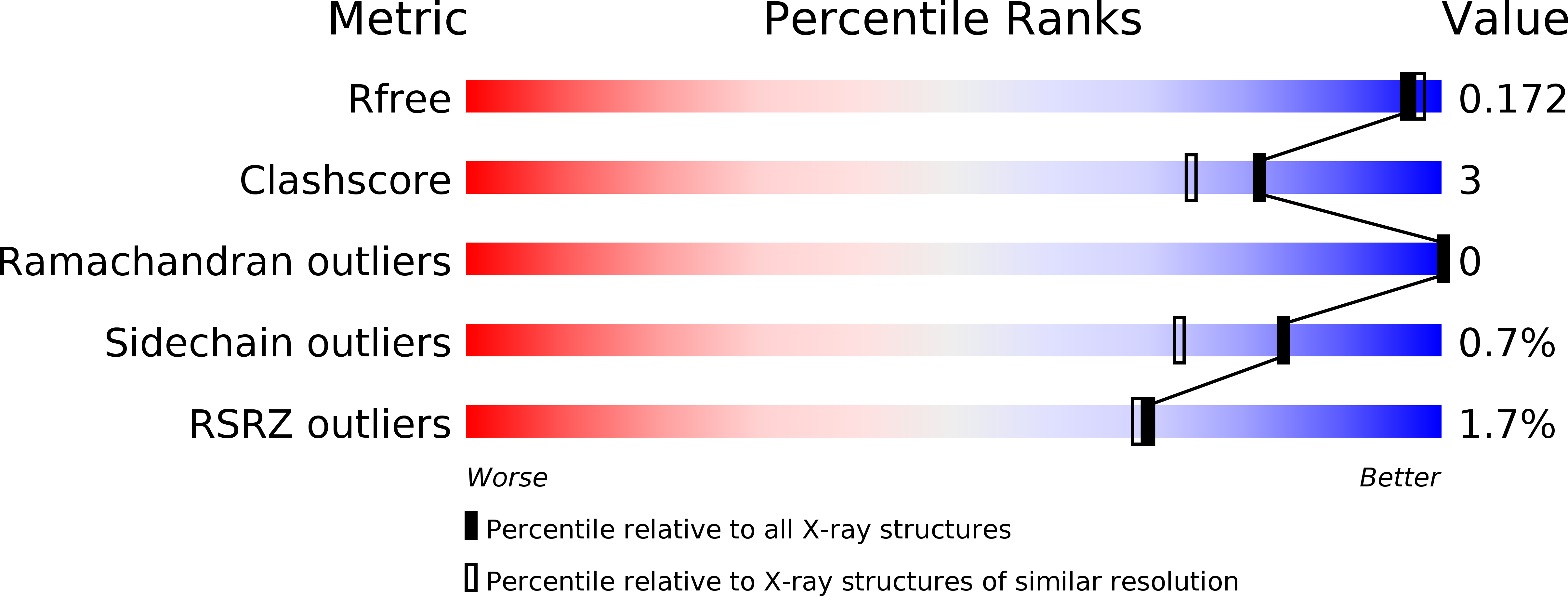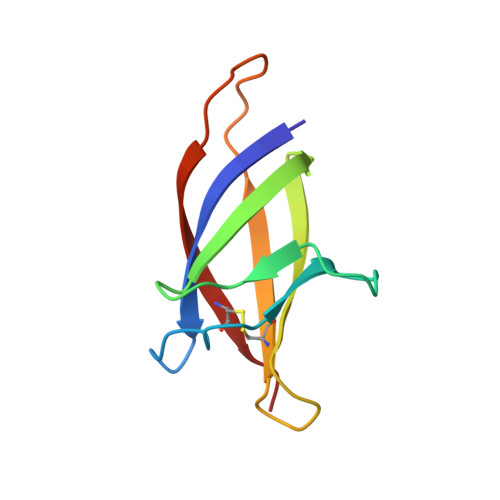Conserved Hydrophobic Clusters on the Surface of the Caf1A Usher C-Terminal Domain are Important for F1 Antigen Assembly.
Dubnovitsky, A.P., Duck, Z., Kersley, J.E., Hard, T., Macintyre, S., Knight, S.D.(2010) J Mol Biol 403: 243
- PubMed: 20797400
- DOI: https://doi.org/10.1016/j.jmb.2010.08.034
- Primary Citation of Related Structures:
2XET - PubMed Abstract:
The outer membrane usher protein Caf1A of the plague pathogen Yersinia pestis is responsible for the assembly of a major surface antigen, the F1 capsule. The F1 capsule is mainly formed by thin linear polymers of Caf1 (capsular antigen fraction 1) protein subunits. The Caf1A usher promotes polymerization of subunits and secretion of growing polymers to the cell surface. The usher monomer (811 aa, 90.5 kDa) consists of a large transmembrane β-barrel that forms a secretion channel and three soluble domains. The periplasmic N-terminal domain binds chaperone-subunit complexes supplying new subunits for the growing fiber. The middle domain, which is structurally similar to Caf1 and other fimbrial subunits, serves as a plug that regulates the permeability of the usher. Here we describe the identification, characterization, and crystal structure of the Caf1A usher C-terminal domain (Caf1A(C)). Caf1A(C) is shown to be a periplasmic domain with a seven-stranded β-barrel fold. Analysis of C-terminal truncation mutants of Caf1A demonstrated that the presence of Caf1A(C) is crucial for the function of the usher in vivo, but that it is not required for the initial binding of chaperone-subunit complexes to the usher. Two clusters of conserved hydrophobic residues on the surface of Caf1A(C) were found to be essential for the efficient assembly of surface polymers. These clusters are conserved between the FGL family and the FGS family of chaperone-usher systems.
Organizational Affiliation:
Department of Molecular Biology, Uppsala BioCenter, Swedish University of Agricultural Sciences, Box 590, SE-75124 Uppsala, Sweden. anatoly.dubnovitsky@molbio.slu.se















